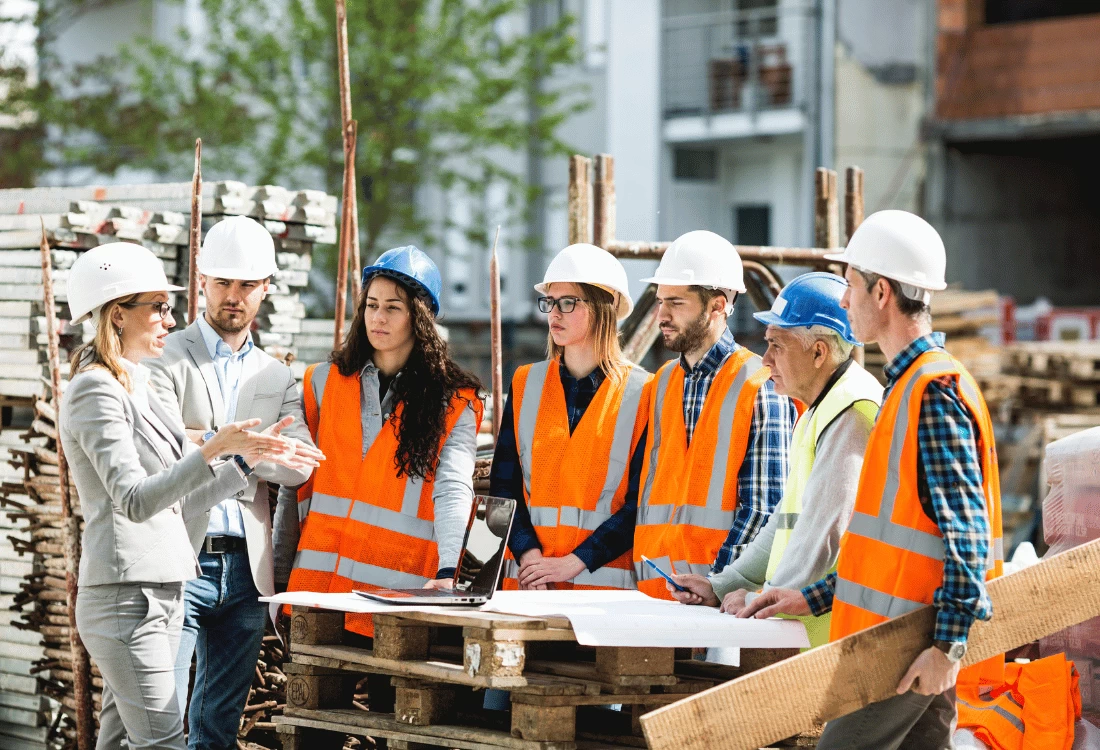
Creating A More Inclusive Working Environment For Women In Construction
As we look forward to International Women’s Day next month (8th March 2024), a lot of construction industry stakeholders and thought leaders are reflecting on the position of women in the industry and how things can be improved. Without ignoring the huge improvements in female involvement in the sector, there is still clearly a long way to go – with at most 16% of British industry workers being women.
Out Of Site, Out Of Mind
The question of how to attract more women into the sector is an old one, and several long-term and successful strategies are already in place to do so. Higher-level technical education, for example, is successfully attracting women into executive and professional construction industry roles. However, the overwhelming majority of women in the construction sector work in back-office roles, not on site.
Only around 2% of site workers are women, and this is a challenge that needs to be addressed if the sector is ever going to reach gender parity.
It’s Worth Asking Why More Women Don’t Want To Work On A Construction Site?
The ‘traditional culture’ associated with construction is an obvious one, but this is changing quite drastically in most areas as old-fashioned attitudes and barriers soften and older workers retire in favour of younger professionals who don’t hold the same prejudices.
Another barrier to women for on-site work is the working environment itself, which is completely geared towards the requirements of male workers. In reality, it usually only takes a few fairly minor adjustments to create a more inclusive on-site working environment for women that could, in time, make more women more comfortable taking on on-site professional, engineering, and practical skilled roles.
1. Incorporate Diversity And Inclusion Into Your Company Culture
It’s often the case that women aren’t actively discriminated against on construction projects, it’s simply that the male site supervisors, managers, and project managers aren’t aware of the actions required to make women feel welcome and safe on their site. By incorporating diversity and inclusion into your company culture through regular teambuilding exercises, management training, and project planning, you can help people instinctively recognise the ways in which changes can be made, breaking down barriers to inclusion.
2. Provide Female Employees With The Right PPE
A lot of the Personal Protective Equipment (PPE) provided for workers on construction sites does not fit women properly for the simple reason that it is designed for men. This can make female employees feel extremely awkward and uncomfortable, and potentially compromise their safety. Supplying a suitable range of female-specific PPE can help ensure their protection on the job and make your construction site more welcoming to female employees.
3. Give Your Employees Access To The Appropriate Facilities And Workspaces
It’s important that your women employees have access to the appropriate facilities that accommodate their needs while on site, including sanitary bins, toilet facilities with lockable doors, hand washing facilities, and even freely available sanitary products. Special precautions should also be taken to isolate and contain potentially hazardous chemicals and materials that could affect pregnant women and women of reproductive age. Additionally, any tools and equipment used by female employees should be available to suit a variety of body sizes and heights.
4. Set Up Supportive Networks And Mentorship Schemes For Female Employees
Turning up for work on a male-dominated construction site can be an intimidating experience, no matter how friendly and welcoming the team may be. A mentorship scheme and female worker support network can help your women employees and subcontractors feel more welcome and supported in your company and in the industry, giving them the confidence to take on a wider range of roles. A schedule of off-site education workshops and training opportunities, made available to all your workforce of any gender, can also help break down barriers and create a safer and more supportive environment for women.
Next Steps
If you are interested in joining the construction sector as a carpenter or joiner and would like to find out more, please get in touch with one of our training and recruitment team today by clicking here.
Image Source: Canva
Click on the categories below to find out more about:

Connect with Us
Share this Page
More Posts
Recent Posts
- Breathe Easy, Work Safe: The RPE Every Site Worker Needs
- From Site to Strategy: Simon Mead Promoted to Associate Director at SC4
- SC4 named Cala Contractor of the Month, October 2025
- Why is Neurodiversity so important in Construction?
- Our Favourite Carpentry Project Of 2024: Cromwell Court, Old Basing
- Case Study: Timber Frame Installation in Netley Grange, Southampton
